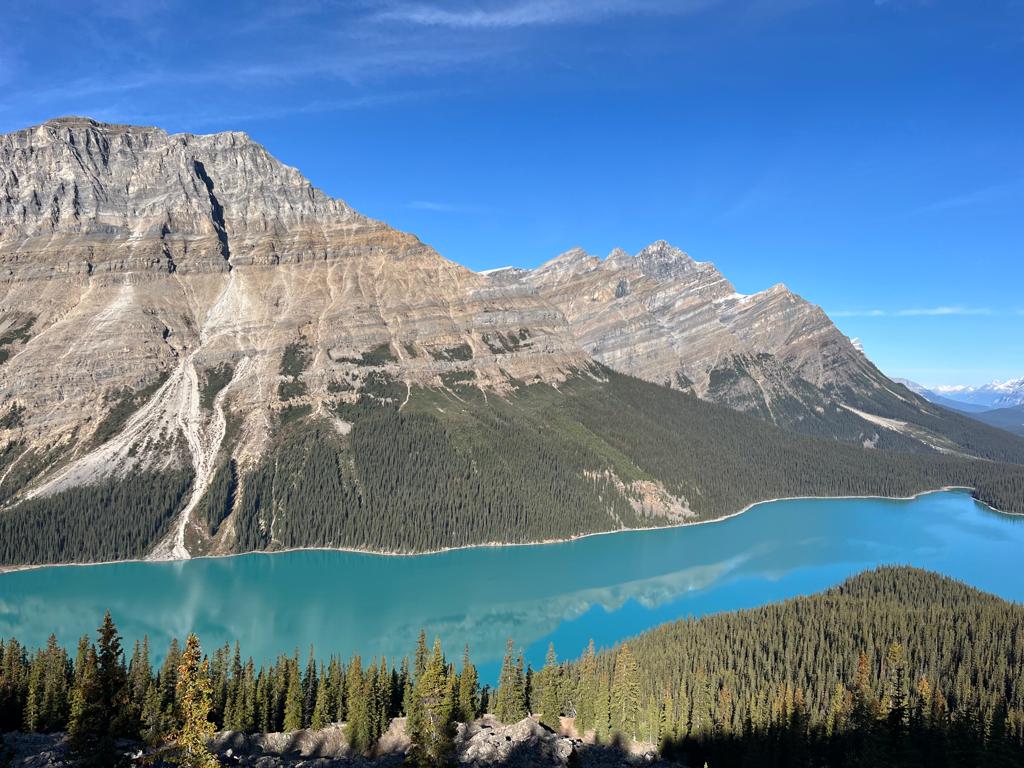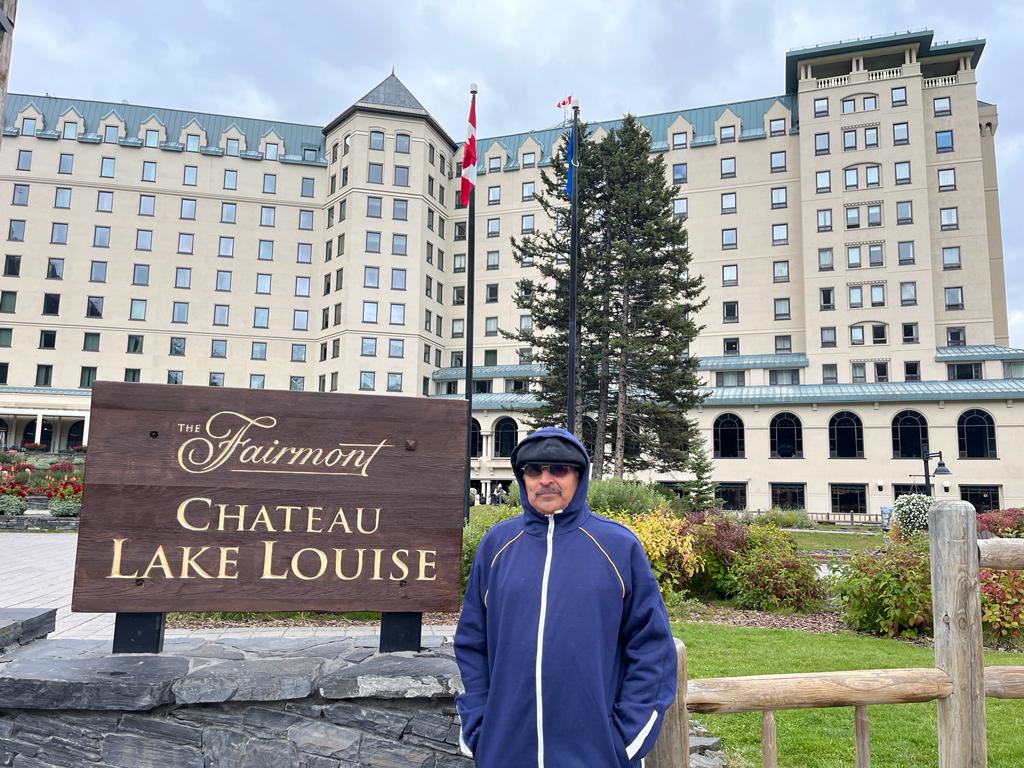Call it serendipity or just fortuitous, my plans to visit the
more scenic parts of Canada, i.e., Alberta and British Colombia, took shape in
May this year. It was partially based on my late wife Gita’s desire to meet up
with Sukhi who was a part of a close-knit team that tirelessly and with joy,
worked for the welfare of our families. What appeared to be a short visit on
paper turned out to be one of the most rewarding experiences of my life. It
panned out in such a way that I derived satisfaction and a great sense of pride
as an Indian in what I saw. Professionally, I was overjoyed to see my old colleague
assuming a leadership role in running a complex training and operational setup
that very few could have imagined in 2004, almost two decades ago. Here we are,
teaching the first world a few nuances of handling front line technology as
experienced by us in the first decade of this millennium. Not through academic
tutorship in Western universities but purely on Indian skills and
entrepreneurship along with innovation. Heartwarming -to say the least.
That my visit coincided with the Justin Trudeau (JT) episode
was the icing on the cake. I was able to get a real time, ground level feedback
with interactions with the Indian Diaspora including an evening with the senior
citizens of North Calgary. Since this
can be better captured with episodic narratives, let me dwell on this before
describing the stunning and scenic beauty of the Rocky Mountain glaciers.
It is not uncommon, particularly in the Armed forces in India,
to have mixed marriages and live in total harmony with freedom to practise his/her
beliefs. I was such a product but from a civilian background. My late wife Gita’s
mother was a Sikhni and Father a
Maratha. My two children have Bengali and Sanskrit/ Arabic names. The next generation has done better. And so is
my former naval colleague in Canada, a Bengali married to a Sikhni. So Sukhi
announced a Ganesh Puja soon after my arrival in Calgary. It was no less in
devotion and intensity than in Mumbai. But the participants were Sikhs with a
handful of Hindus from all parts of India. The bhajans were sung with such
fervour and they were not Faujis-if you thought so. This was the first introduction
to ground level realities. Paradoxically, I was receiving messages from well-wishers
in India to exercise caution on the streets of Canada. The power of 24/7 news
channels that create anxiety and fear where none is needed, was once again on
display.
The ratings of JT in Canada were declining rather precipitously despite his Govt’s reported hold over mainstream media. The Canadian Army Deputy Chief Gen Peter Scott on a visit to Delhi to interact with the Indian army captured the essence of the reality. When confronted by an overzealous reporter in Delhi, he emphatically underlined the need to improve the army-to-army relations while the politicians on both sides deal with issues.
Episodic Narratives
I was introduced to a navy veteran from India who left the
navy decades ago and was presently settled in Calgary after stints in the
merchant marine and industries abroad. Within minutes we realised that he was a
senior sailor from the afloat support team that took care of my SAM system in
the 1980’s. In turn, I was able to connect him with his old boss. Despite his
success in technology-based industry, he remained rooted to the navy as we all
ought to. Grewal, spoke with so much
love and respect that we shared our thoughts over delightful evenings and a
long drive to see the mountains. A tradition that pleasantly surprised me, is the
spontaneous effort of the young members to touch the feet of the older ones to
seek their blessings. The parents have managed to encourage and sustain old
customs and traditions that are on their way out in India.
The Indian or Asian diaspora have ghettoed themselves in
clusters where the white citizens are conspicuous by their absence. There are
very few pockets where migrants share residential clusters with the whites. The
Asian/Indian clusters create an ecosystem filled with Indian stores and
markets of all products. While it is unlikely to promote integration with the
Canadians, there is definitely a sense of lack of security and comfort that
needs to be addressed. The aboriginal Canadians have been pushed to far away settlements
much like the American Indians, the original inhabitants.
Some of you may be aware that Indian students aspiring to
study abroad may choose Canada for several reasons. It is now an industry worth
Billions of Dollars. What surprised me was that there are colleges that host a
majority from the state of Punjab alone. The faculty consists of some local
citizens and Indians. But as compared to the locals, the students have not come
here in large numbers to be professionally competent and are quite satisfied to
pass with minimum grades. Since the foreign students have to pay three times
the fee, their attention is not on studies but to sustain themselves by
illegally working beyond the permissible weekly limits. Work permits and
obtaining status of permanent residents are the highest priority. Given the number of immigrants entering Canada,
despite the recent curtailment, it is likely to fill up low grade jobs that pay
by the hour. Hence dependence as hitherto on easy means of employment for the
students to sustain their education needs closer scrutiny. Spiralling cost of
air travel is a major factor while balancing their fee structure with need to
visit the family every year.
These valuable insights were deduced from long discussions
with Sukhi’s family consisting of Sonu, and three nieces pursuing different
academic paths. Japsovin, a young lad who would have made a fine soldier in our
army, is now seeking greener pastures due
to an accidental leg injury. Together they made good sparring partners while discussing
issues on higher education in India.
University of Calgary has boarding facilities and insists on
in-class presence as opposed to online teaching which has assumed permanency
even after COVID. That is a loophole used to advantage by those that entered
the portals of Canadian institutions only to meet their ulterior goals.
Professional institutions of repute that cater to Management, Finance, technology,
however, are known to maintain high standards of pedagogy and attendance.
Finally, the only missing link while interacting with the Indian
diaspora was their ignorance of the details of infrastructure development and
scores of other technological achievements in India. That gap needs to be filled through a
well-designed digital and social media thrust that captures their attention. Punjabi
is the preferred language of communication, since they form the largest segment
of the Indian diaspora. FM radio channels could be so targeted not as
propaganda but as valuable inputs for travel to India.
The scenic splendour
The drive leading to the Rocky Mountains is peppered by barren
fields and yet segments of multi-coloured trees indicating autumn or fall stun
you before you reach the most pristine lakes and glaciers at about 2300 M. There
are wide choices such as lake cruise, gondola rides (cable cars), Colombia ice
field adventure and sky walk and many quaint villages such as Whistler in BC
enroute to Vancouver for exiting Canada, are priceless sights to see.
Alberta
Drumheller, Alberta
Banff National Park
Columbia Icefield Adventure
British Columbia
Whistler National Park, BC
But for the efforts made by Kishore and Sukhi I could not have covered so much in 10 days. The only tip I can give is to choose the time of the year such that summer vacation is avoided due to tourists and limited parking facilities. Fall or autumn would be ideal.
Nature in all its splendour is best experienced in Alberta
and British Columbia.














